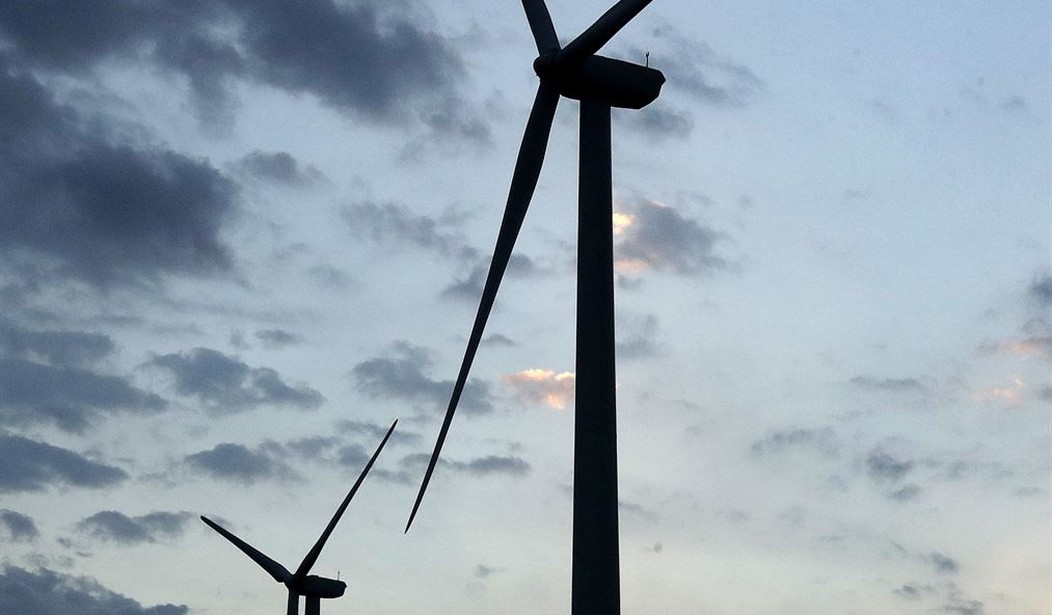Back in February, I had a post on the troubles the wind industry was having with excessive warranty claims. Companies who pioneers in wind turbines, like Siemens and Vestas, had noted huge losses in their quarterly profit reports because of equipment failures under warranty. Coupled with declining orders, their answer was – of COURSE – more government subsidies to artificially prop (*snicker) them up until they got their act together.
But governments like our own pig-headed administration powered ahead with their wind projects in any event, or are attempting to, approving ever bigger wind farms with larger turbines to increase the power output when the wind actually blows.
It is turning out that those scaled-up turbines may not be the panacea to continents shutting down reliable sources of electricity in favor of wind after all.
After a bit of time in the field, it’s turning out that bigger breaks – sooner and more often.
Back in February, I posted about the problems turbine and wind companies were having with warranty costs eating them alive, ergo "NEED MORE SUBSIDIES TO SUSTAIN US."
This is more validation we are on the wrong track, big time.@Oilfield_Rando https://t.co/juXtVx69he
— tree hugging s*ster 🎃 (@WelbornBeege) May 7, 2023
Make no mistake, the new designs are monstrous in size and being designed even bigger all the time.
…The blades of Vestas Wind Systems’ largest turbine, currently in testing, are nearly 380 feet long. Each turbine towers more than 900 feet and can generate up to 15 megawatts of electricity—enough for a town. Turbines that were state-of-the-art a decade ago had around a fourth of that capacity.
But insurance claims are pointing to the fact that they are also fragile, which presents its own set of problems when you’re dealing with something 1000ft tall and the blades spinning on it.
…But GCube, a renewable-energy insurer owned by Japan’s Tokio Marine HCC, sees a downside. It found that component failures in turbines with 8-megawatt capacity or greater occur on average after just over a year. That compares with over five years for turbines of 4-to-8 megawatts.
…GCube’s report was based on its claims data and information from other market participants. The company says it has insured more than 100 gigawatts of renewables assets since the 1980s.
Fraser McLachlan, GCube’s chief executive officer, said the firm reduced its offshore-wind exposure in the last few years. That was because claims were rising, while new players in offshore-wind insurance were driving down pricing to what he described as unsustainable levels. He predicted that if losses mount, insurers will pull out, making projects harder to finance and slowing the energy transition.
Some problems reflect the rapid introduction of new models. Losses from defective materials or workmanship, electrical failures and gearbox failures are rising, GCube said.
Other issues show how larger turbines are testing the industry’s supply chain. Some 55% of claims involved turbines of 8 megawatts or more and occurred during the construction phase, reflecting the difficulty of handling them, GCube said.
The average claim size has increased from 1 million pounds, worth approximately $1.25 million, in 2012, to over $7 million. GCube said that is down to the cost of parts and repairs on larger systems. Only a few of the vessels that install turbines can handle the largest ones, and diverting them for repair jobs is expensive.
No insurance company is going to stay in business long covering claims of the magnitude at that rate. As they also note, only certain-sized vessels can handle ocean-going components of that enormous length and weight. If you have to pull that vessel off of a project to transport a broken component back to shore and wait on a replacement or just the transit time alone, what does that do to the rest of your schedule? And what does that do to your projected costs?
Well, it blows them out of the water.
Even General Electric is saying that wind turbines got too big, too fast and they’re pulling back. Well, hello.
Wind turbines have become too complex and it’s time to pull back on niche models and streamline operations, GE’s onshore wind boss says.
Turbine builders like GE have tried to combat declining power purchase agreements (PPAs) and shrinking tax credits with “faster product launches, more variants, more product derivatives”, GE onshore wind head Vic Abate told the GE 2023 investor conference.
“The result of that was more complexity, lower quality and higher costs,” he said.
GE has struggled with its wind business, blaming the $US2.2 billion ($A3.3 billion) loss in 2022 on rising warranty provisions as more complicated turbines cause higher than expected maintenance costs and warranty call-outs.
Do tell. How long has this renewable BS been going on? It isn’t right yet, and we’re supposed to be selling our souls for it and living in the dark until they get it right…IF they ever do?
…The company is reducing the number of rotor models it will make from 15 to four, the number of nacelles from nine to four, and the number of tower models from 40 to nine.
“As a result, we’re going to end up with larger fleets of the same unit. This is going to give lower production costs, this is going to drive a faster closed loop learning curve, and really allow us to drive more robust innovation in a structured way,” Abate says.
Oh, great. MORE towers mean they need more land or water or whatever. With more dead birds, whales, people driven crazy by the hum, and hundreds of thousands more gallons of oil spewed across the countryside from the turbines, just to mention a few of the downsides.
And what fueled this explosion of “very expensive things that don’t work”?
Government money and power. Biden’s Green give-away has pushed it into overdrive.
…Potential private investment over the next decade spurred by federal tax incentives and loans could include $900 billion in renewable-energy projects and $100 billion in battery storage, according to Goldman Sachs. Adding investments in such areas as carbon capture and electric vehicles, total spending could reach $3 trillion, the firm estimates.
Well, people have had enough. The fight over the offshore farm in New Jersey is far from over, and people all over the country are starting to galvanize opposition and push back hard.
…County-by-county battles are raging as wind and solar projects balloon in size, edge closer to cities and encounter mounting pushback in communities from Niagara Falls to the Great Plains and beyond. Projects have slowed. Even in states with a long history of building renewables, developers don’t know if they can get local permits or how long it might take.
In Kansas, wind power grew rapidly for two decades and supplies around 45% of the electricity generated in-state, ranking it third in the nation. But at least five counties in more-populous eastern Kansas have recently placed moratoriums or bans on new wind or solar projects, joining 18 others that already restricted wind development to preserve the tallgrass prairie ecosystem. Kansas lagged behind nearly every state in large project construction and new clean power capacity last year, according to the American Clean Power Association, an industry group for wind, solar and battery storage.
…In Michigan, a typical solar project once covered 60 acres but now would take up 1,200, said Sarah Mills, a senior project manager at the University of Michigan’s Graham Sustainability Institute. Ms. Mills said they may need to get smaller—and more expensive—to be more socially acceptable. A refrain emerging at community meetings she attends is, “What you’re asking our rural community to host is way more than our fair share.”
…Mr. Forth’s sister, Laurie Shuck, recently purchased a stack of “no trespassing” signs to post around her fences to try to keep out NextEra representatives offering wind leases or transmission easements. One late afternoon as light faded at her farm, the moon rose in the east and a flock of geese honked overhead. She paused to watch. Mrs. Shuck said she and her brother would lease land for wind projects, “over our dead bodies.”
“I was here first,” she said, and walked to feed her horses.
It’s a crock. The fact that these things have yet to live up to any of the rosy promises made is one thing, but that fact that the technology is still so unreliable – and that’s before you get to discussing the waste component of it when it all falls apart – should have people switching nuclear reactors back on and in the planning stages for newer, cleaner versions that are already proven.
We need a general uprising of outrage and demand common sense, not pipe dreams.
It’s not a privileged sin to want the lights on.








Join the conversation as a VIP Member